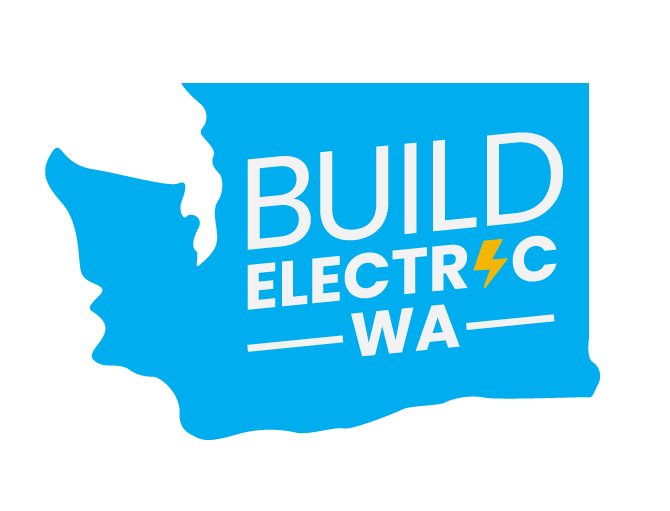
Examples of electric homes & buildings in Washington
Single-Family Home Retrofit: Bellingham
This home was built in 1952 and retrofitted in 2020 to meet the needs of the 21st century. The all-electric house has heat pumps for space and water heating, and an induction cooktop in the kitchen. In addition, a heat recovery ventilator filters inside air, and solar panels help make this a net zero energy home. Learn more.
School: Port Angeles, Peninsula College Allied Health and Early Childhood Development Center
This 40,000 square foot building houses Peninsula Community College’s healthcare and early childhood education programs, as well as childcare facilities. It is an all-electric building with the following components: VRF (Variable Refrigerant Flow) heat pump heating and cooling, natural ventilation for cooling of classrooms and offices, heat pump water heaters, low-flow plumbing fixtures, dedicated outdoor air systems for ventilation with heat recovery, a high-performance building envelope, and fixed exterior shades, which cover the windows from the outside, reducing heat exposure during hot days. Learn more.
Office Building: Spokane, Catalyst Building
Catalyst is one of the largest net zero energy buildings in North America, and does not utilize any fossil fuels onsite. The 159,000 square foot office building features an efficient radiant heating/cooling system and heat recovery of all exhaust air, thermal energy and battery storage systems, rooftop solar, and LED lighting. In addition, the building’s high performance envelope reduces heat transfer in both directions, dramatically cutting down on heating and cooling needs. Learn more.
Affordable Townhomes: Seattle
In partnership with the Washington State Housing Finance Commission, Green Canopy completed these seven Net Zero Ready, all-electric, Built Green certified and affordable homes. The townhomes use heat pumps for efficient space heating. These homes are rented to families earning 60% and 80% of the area median income. Learn more.
Apartment building: Seattle, Inspire Fremont
Inspire Fremont is a net-positive apartment building. The solar panels on its roof create 105% of its electricity use, which help keep the residents’ electricity bills minimal. The building has two ultra-efficient ventilation and heat recovery units on each floor. These units heat the rooms, while also bringing in fresh air. Learn more.
Affordable Housing, 111 units: Seattle, Hoa Mai Gardens
In Hoa Mai Gardens, Energy Recovery Ventilators (ERVs) are used to preheat incoming outside air by using energy from the outgoing exhaust air. This decreases residential unit heating loads, subsequently reducing both energy use and costs. In addition, the building is all-electric and includes a solar hot water preheating system, rainwater harvesting, and gray water piping systems for toilet flushing. Learn more.
Hospital: Moses Lake, Samaritan Healthcare
This 175,000 square foot hospital has all-electric HVAC (Heating, ventilation, and air conditioning) systems with a heat pump heat recovery chiller that decouples heating and cooling from ventilation to minimize energy use. While most hospitals in the Pacific Northwest have an EUI (Energy Use Intensity, or amount of energy used per square foot of building) target of 275, the Samaritan Healthcare - Moses Lake hospital has a much lower EUI target of 150. Learn more.
Check out these policy options for local governments to build electric!
Local governments across the state are already taking action to phase out the use of gas and support local communities in transitioning off fossil fuels. We’ve compiled a series of policy options designed for cities, counties, and school districts to take action on climate and protect their residents. Learn more.








